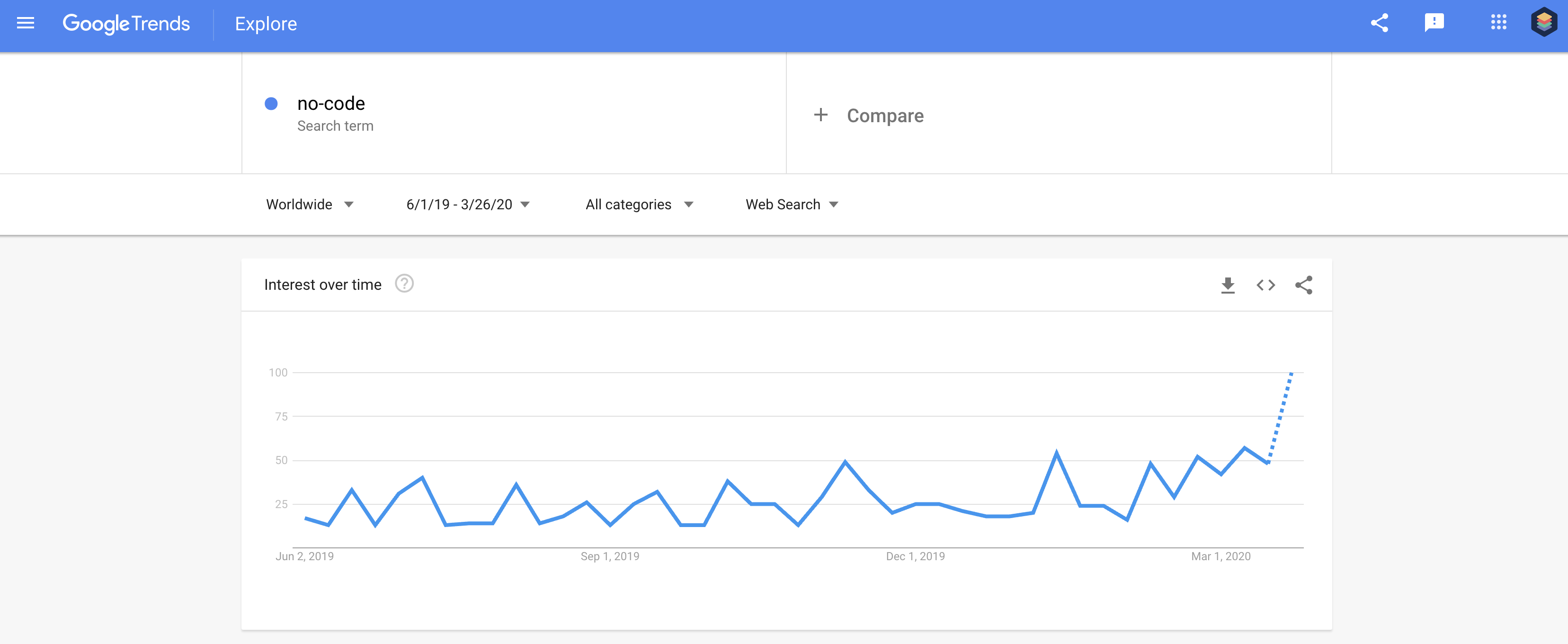No-Code Open Platform Data Source Creation: Simplify Facility Advancement Jobs
No-Code Open Platform Data Source Creation: Simplify Facility Advancement Jobs
Blog Article
Discover Exactly How Scalable Databases Can Be Used Without Coding to Enhance Your Service Procedures
In today's busy business environment, the ability to take care of and analyze information efficiently is paramount. no-code. Scalable data sources, specifically when combined with no-code solutions, use a transformative approach that equips non-technical customers to streamline operations.
Understanding Scalable Data Sources
Scalable data sources are crucial for modern-day business procedures, enabling organizations to successfully take care of boosting quantities of data without sacrificing performance. These databases are developed to grow and adapt to the transforming needs of a business, ensuring that they can deal with bigger datasets and more intricate inquiries as business requirements advance.
Recognizing scalable data sources entails acknowledging their two main kinds: upright scaling and straight scaling. Upright scaling, or "scaling up," entails adding more power (CPU, RAM) to an existing server to improve efficiency. Alternatively, horizontal scaling, or "scaling out," involves including much more servers to distribute the lots, which frequently causes greater versatility and mistake tolerance.
Another essential facet is the architecture of scalable databases, which can be either non-relational or relational. Relational databases, such as MySQL and PostgreSQL, are structured and use SQL for queries, while non-relational data sources, like MongoDB and Cassandra, use even more flexibility with unstructured information.
Inevitably, understanding scalable data sources is essential for companies intending to take advantage of data as a tactical property, enabling them to stay affordable in a progressively data-driven setting.

Benefits of No-Code Solutions
Unlocking the capacity of no-code services encourages businesses to simplify procedures and enhance productivity without the need for comprehensive shows knowledge. These systems enable non-technical users to produce, customize, and handle databases easily, thus equalizing accessibility to technology across teams.
One of the key advantages of no-code options is their speed of application. Organizations can quickly release applications and automate procedures, dramatically decreasing the time spent on development cycles. This agility makes it possible for organizations to react promptly to market changes and consumer requirements, promoting an affordable side.
In addition, no-code platforms decrease reliance on IT departments for everyday jobs, allowing technological groups to concentrate on even more complex projects that need specialized skills. This shift not only maximizes source allocation but likewise advertises innovation within the company.
Cost-effectiveness is another advantage, as no-code services can lower advancement and maintenance expenditures. By lessening the demand for coding expertise, firms can harness the capabilities of their existing workforce without the expenses of employing added employees.
Popular No-Code Database Equipment
The increase of no-code options has actually caused the emergence of different database tools that provide to companies looking for effectiveness and accessibility. These tools equip users with restricted technological knowledge to develop, handle, and manipulate databases seamlessly.

Caspio attracts attention for its capability to construct internet applications with no coding. It enables services to develop robust databases and deploy applications rapidly, dealing with various market requirements. Similarly, Flair uses powerful data and user-friendly interfaces management capabilities, enabling organizations to develop personalized applications customized to their operations.

Use Situations in Company Operations
Exactly how can services take advantage of data source devices to boost their operations? Scalable databases supply companies with powerful capabilities to handle and examine information without the demand for extensive coding understanding. These tools can improve numerous service processes, inevitably bring about enhanced performance and productivity.
One prominent use instance is customer partnership administration (CRM) Businesses can utilize scalable data sources to track client interactions, choices, and feedback, making it possible for personalized communication and much better solution. By systematizing this info, teams can team up more properly and react to consumer demands in real-time.
Another substantial application is inventory monitoring. Companies can employ no-code data source devices to keep an eye on supply degrees, track deliveries, and projection need. This guarantees optimal stock levels, reduces waste, and reduces stockouts.
Additionally, task management can gain from scalable databases by enabling groups to take care of continue reading this jobs, deadlines, and sources in an unified system. With real-time updates and information visualization, job managers can make educated choices.
Beginning With Execution
Executing scalable data sources in service procedures requires an organized method to ensure successful integration and use. The initial action is to perform a detailed needs evaluation, determining particular company needs, information kinds, and expected development patterns. This foundational understanding will assist the choice of the ideal data source service.
Next, choose an easy to use, no-code database platform that aligns with your operational goals. no-code. Numerous modern-day options use instinctive interfaces, permitting non-technical customers to take care of data successfully. After picking a platform, establish a clear information style that describes how data will certainly be organized, accessed, and maintained
Training is critical; ensure that employee are outfitted with the required skills to make use of the database. Take into consideration giving workshops or tutorials to familiarize staff with the system's functionalities.
Conclusion
Finally, the assimilation of scalable databases through no-code services presents significant benefits for business procedures. These platforms encourage non-technical individuals to efficiently handle and analyze data, helping with boosted decision-making and cooperation. By embracing devices such as Airtable and Concept, companies can minimize and streamline processes dependence on IT sources. Eventually, leveraging these modern technologies can bring about improved efficiency and operational effectiveness, positioning businesses for sustained development in an affordable landscape.
One preferred no-code database tool is Airtable, which integrates the functionality of a spreadsheet with the power of a database.Just how can businesses take advantage of database devices to improve their procedures? Services can utilize scalable databases to track consumer interactions, preferences, and comments, allowing personalized communication and better service.Carrying out scalable data sources in service procedures needs a structured approach to make certain effective combination and usage.In conclusion, the assimilation of scalable data sources through no-code options provides considerable benefits for company procedures.
Report this page